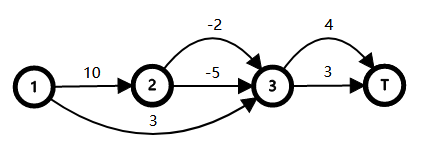Preparando MOJI
There are $$$n$$$ squares drawn from left to right on the floor. The $$$i$$$-th square has three integers $$$p_i,a_i,b_i$$$, written on it. The sequence $$$p_1,p_2,\dots,p_n$$$ forms a permutation.
Each round you will start from the leftmost square $$$1$$$ and jump to the right. If you are now on the $$$i$$$-th square, you can do one of the following two operations:
There are $$$q$$$ rounds in the game. To make the game more difficult, you need to maintain a square set $$$S$$$ (initially it is empty). You must pass through these squares during the round (other squares can also be passed through). The square set $$$S$$$ for the $$$i$$$-th round is obtained by adding or removing a square from the square set for the $$$(i-1)$$$-th round.
For each round find the minimum cost you should pay to end it.
The first line contains two integers $$$n$$$, $$$q$$$ ($$$1\le n,q\le 2 \cdot 10^5$$$) — the number of squares and the number of rounds.
The second line contains $$$n$$$ distinct integers $$$p_1,p_2,\dots,p_n$$$ ($$$1\le p_i\le n$$$). It is guaranteed that the sequence $$$p_1,p_2,\dots,p_n$$$ forms a permutation.
The third line contains $$$n$$$ integers $$$a_1,a_2,\ldots,a_n$$$ ($$$-10^9\le a_i\le 10^9$$$).
The fourth line contains $$$n$$$ integers $$$b_1,b_2,\dots,b_n$$$ ($$$-10^9\le b_i\le 10^9$$$).
Then $$$q$$$ lines follow, $$$i$$$-th of them contains a single integer $$$x_i$$$ ($$$1\le x_i\le n$$$). If $$$x_i$$$ was in the set $$$S$$$ on the $$$(i-1)$$$-th round you should remove it, otherwise, you should add it.
Print $$$q$$$ lines, each of them should contain a single integer — the minimum cost you should pay to end the corresponding round.
3 2 2 1 3 10 -5 4 3 -2 3 1 2
6 8
5 4 2 1 5 3 4 6 -5 3 -10 -1 0 3 2 7 2 1 2 3 2
-8 -7 -7 -8
Let's consider the character $$$T$$$ as the end of a round. Then we can draw two graphs for the first and the second test.


In the first round of the first test, the set that you must pass through is $$$\{1\}$$$. The path you can use is $$$1\to 3\to T$$$ and its cost is $$$6$$$.
In the second round of the first test, the set that you must pass through is $$$\{1,2\}$$$. The path you can use is $$$1\to 2\to 3\to T$$$ and its cost is $$$8$$$.